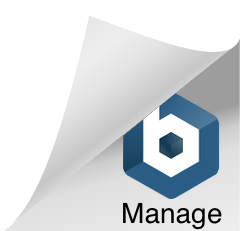Turn It Up Tuesday: Tips from Insightly to Take Your Business to 11
Welcome to Turn It Up Tuesday, where we bring you 4 weekly tips—a tip on running your business, a tip on using Insightly CRM, a tip on improving your sales, and a tip on improving your life. Enjoy this week’s tips!
 |
Pipelines Versus Milestones: When to Use What |
| Pipelines are useful when your workflow follows a sequential order. For example, you might use a pipeline to stay organized on that important eBook you’re developing. Your content must first be written before your graphic designer can work his magic.
Once the layout is complete, your editor does a final review before handing it off to your web team. Then, your social media manager shares the landing page and drives new leads. Each step is dependent upon the previous one getting done, which makes a pipeline the wise choice. Milestones offer a bit more flexibility, especially when tasks must be done concurrently. An advertising campaign might necessitate a milestone-based project. Banner graphics, radio scripts, press releases, and social media posts can be developed simultaneously – but still be neatly rolled up into a project-level view. For additional information about using Insightly pipelines and milestones, check out this in-depth summary.
This week’s tip was provided by Tony Roma. Tony is an Insightly product expert who has been helping businesses implement software solutions for over ten years. |
|
 |
Why You Need 10 Minutes of Quiet Time |
| You roll out of bed, and the first thing you look at is your smartphone. You have thirty new emails since you went to sleep – and that was only six hours ago. Another day has begun, and you’re already knee-deep into it before your feet hit the floor.
Finding quiet time is increasingly complicated in today’s fast-paced world. Social media, email, text messages, conference calls, voicemail, apps, and other distractions can consume every minute of our lives (if we allow them). While all of these gadgets and tools are extremely beneficial, it’s important to be proactive and not let them control you. You don’t want to get burnt out. As a first step, try scheduling ten minutes of daily “quiet time” for the rest of this week. Find a time that you can commit to, and even consider putting it on your calendar. During that quiet period, close your eyes and try to relax. Clear your mind of any thought that consumes you. In doing so, you’ll likely feel more relaxed and less stressed. Warning: if you have never tried to make quiet time, it’s going to be hard at first. Sitting still and doing nothing feels counter-productive, but it’s not. You deserve a few minutes of peace each day. |
|
 |
Stop Delegating from Your Inbox |

Your team is already overworked. Filling their inboxes with your random ideas only makes the situation worse. Instead, look for ways to create accountability through a more structured approach. Consider these six steps:
As your team becomes comfortable with this workflow, you may find that some tasks are actually recurring events. If so, consider configuring repeat tasks (learn how to do that with Insightly here). This will save you an added step of remembering to enter new tasks. You’ll also see an uptick in your staff’s productivity. |
|
Always Be Simplifying Your Pitch |
|
| People won’t buy what they can’t understand.
If you regularly find yourself on the receiving end of confused looks, perhaps it’s time you simplify your pitch. To do this, consider the following suggestions. Understand Buyer Personas Before you can simplify your pitch, you must first have an in-depth understanding of your audience. It’s therefore no surprise why experienced sales professionals invest adequate time to understand the buyer personas for their product or service niches.
If you’ve never developed personas, it’s time you did so. The process can actually be kind of fun! Here are a few questions to ask yourself:
As you answer these questions, you may uncover multiple buyer personas. Keep in mind that personas may come from diverse backgrounds and perspectives, so understanding what makes them tick is important. Identify Common Pain Points With a firm understanding of buyer personas, it’s now time to start thinking like one. As great as your offering is, prospective customers mainly care about how it benefits them. Evaluate your product or service through the eyes of each persona. Specify how it helps to overcome specific challenges. Condense Your Pitch into a Headline For a moment, imagine that your local newspaper was willing to advertise your company on its front page. What should the headline say? Although this situation is unlikely, compressing your offering into five or so words is a worthwhile exercise. It forces you to be as concise as possible without under communicating your value proposition. (Each persona may require a slightly different headline.) Draft a few headlines and let them sit overnight. The next morning, while your mind is still fresh, read through them again and pick those that jump out to you. Again, you’ll probably want to do this through the eyes of a potential buyer. Once you’ve selected a compelling headline, you can then use it to craft longer messaging, such as an elevator pitch and email copy. From a sales perspective, the headline serves as a central theme for your ongoing communication efforts. Do Some Testing Now is the moment of truth. Seek opportunities to test your simplified messaging. As you speak with new customers, pay close attention to their reactions. It may also be wise to add notes in your CRM and occasionally review how clients are responding as a whole. If a certain message fails to resonate, continuously refine your approach until a noticeable improvement occurs.
|
Check out Insightly’s features and plans on our pricing page or sign up for a free trial of the best CRM around.![]()
Send Us Your Tips. Would you like to share your tips with Insightly customers? Send them to us! If we use one in our weekly feature we’ll send you a $10 Amazon Gift Card! Contact us on Facebook, Twitter, Google+, or send us an email.
About the author: Matt Keener is a marketing consultant and President of Keener Marketing Solutions, LLC. Matt specializes in content marketing and strategic planning, having helped numerous Saas (software as a service) companies and other small businesses worldwide. Read more of Matt’s work, check out his book, or connect with him onLinkedin.






